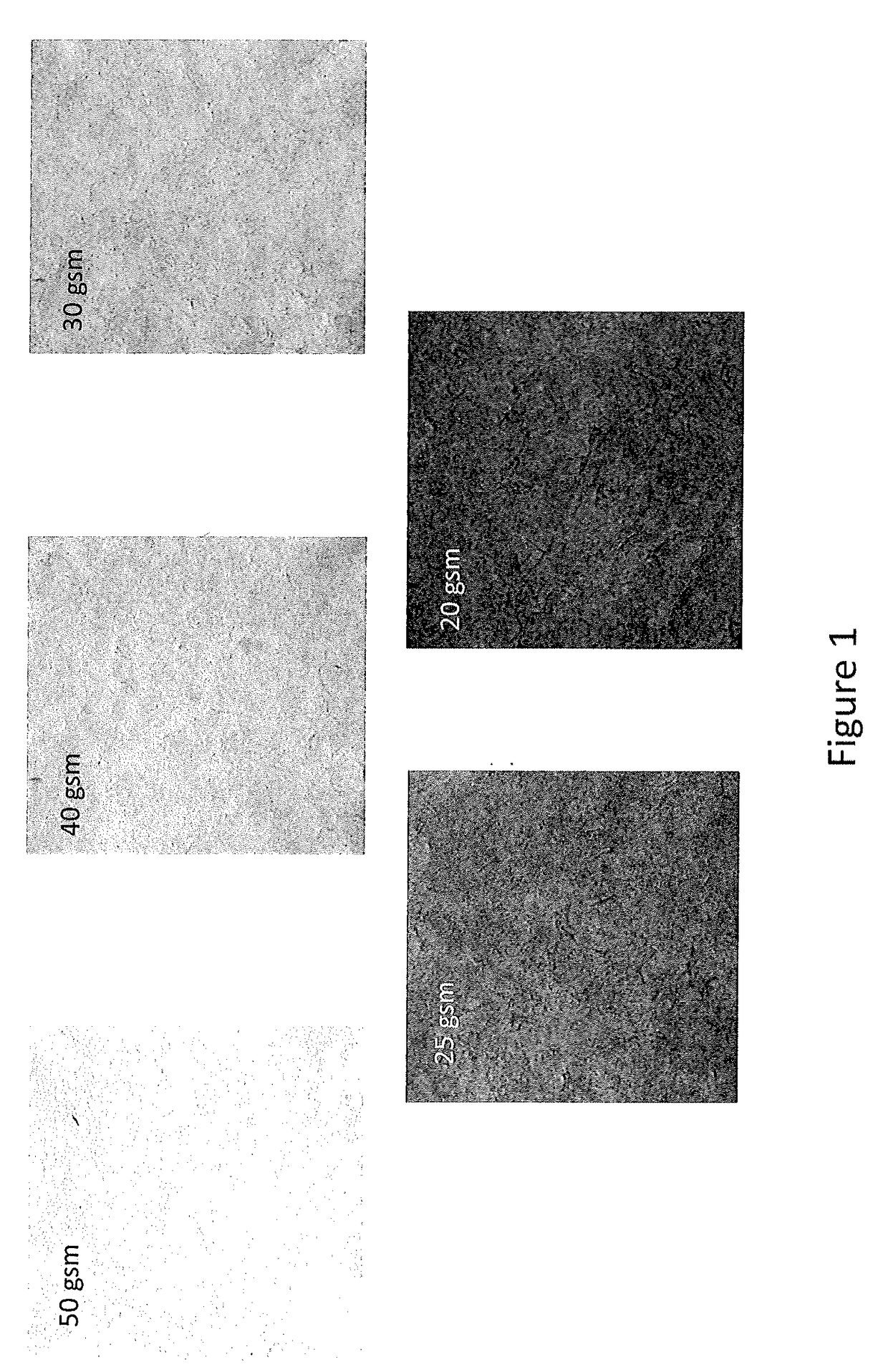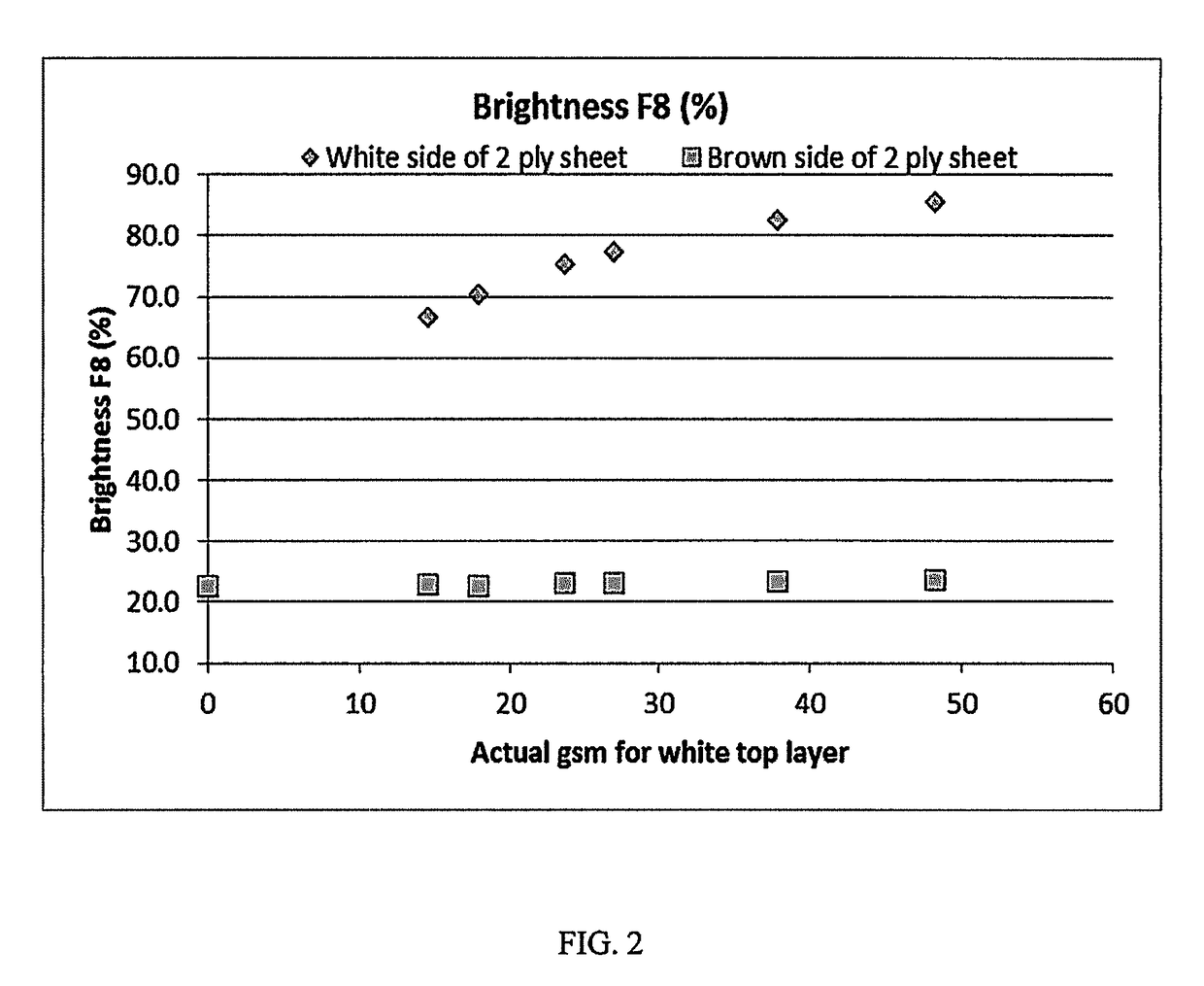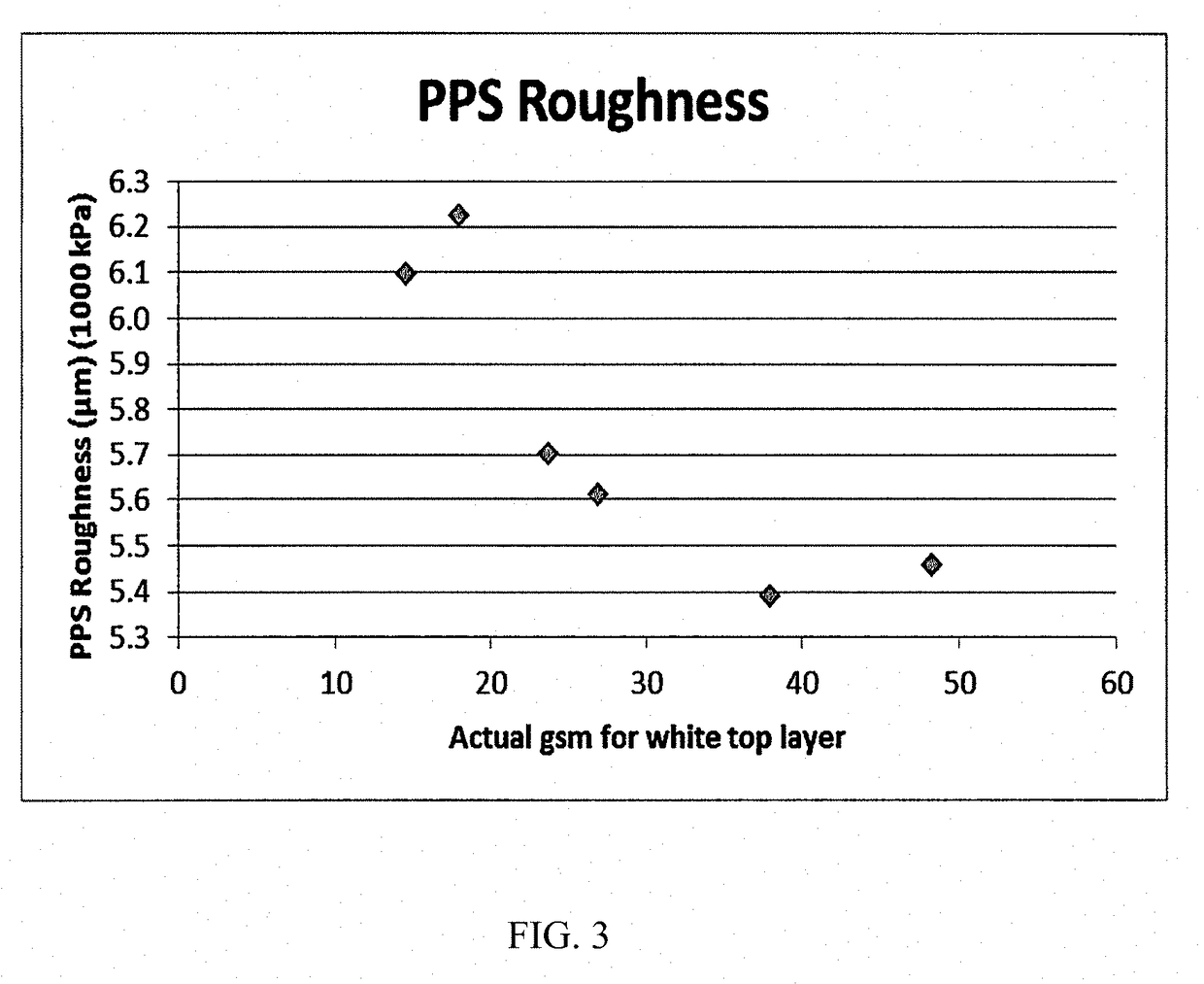Paper and paperboard products
a paper or paperboard product and paper board technology, applied in the field can solve the problems of affecting the quality etc., and achieves the effects of low cost, good optical and physical coverage, and low basis weight of paper or paperboard products
- Summary
- Abstract
- Description
- Claims
- Application Information
AI Technical Summary
Benefits of technology
Problems solved by technology
Method used
Image
Examples
example 1
[0175]1. A 150 g / m2 brown sheet was produced in a handsheet former. Percol® 292 was used as retention aid at 600 ppm based on the total solids of the final handsheets.
2. Once the brown sheet was formed some of the retained water was removed by manually pressing the sheet with three blotted papers. No adhesion was observed between the blotters and the sheet.
3. The brown base sheet was then turned upside down in order for the smoother side of it to be on the top.
4. A specific amount of microfibrillated Botnia Pine and Bleached Kraft Pulp and calcium carbonate (Intracarb 60) at total solids content of 7.88 wt. % (18% microfibrillated cellulose) was measured in order to get the desired grammage for the white top layer (sheets were prepared at 20 g / m2, 25 g / m2, 30 g / m2, 40 g / m2 and 50 g / m2). The microfibrillated cellulose / calcium carbonate sample was then diluted to a final volume of 300 ml using tap water.
5. The sample was poured on the brown sheet and a vacuum was applied. Polydadmac (...
example 2
Trials 1-4
[0179]The Fourdrinier machine was run at 60 ft / min (18 m / min). A ‘secondary headbox’ was used to apply the coating. This was a custom-made device in which the furnish flows into a series of ‘ponds’ and then over a weir and onto the web. The custom secondary headbox does not require as high a flowrate as a GL& V Hydrasizer in order to form a curtain, and so it was possible to increase the microfibrillated cellulose and inorganic particulate material solids used and still achieve the target coat weights. Working at higher solids meant that the secondary headbox could be positioned further from the main headbox, at a position where the sheet was more consolidated, and yet the microfibrillated cellulose and inorganic particulate material slurry applied as a top ply could still be adequately dewatered before the press.
[0180]With the secondary headbox in place a short distance after the wet-line a 1:1 ratio of microfibrillated cellulose to organic particulate material was applie...
example 3
[0196]In accordance with the set-up and parameters set forth in Examples 1 and 2, the continuous production of coated substrates with different coat weights and base substrates were studied. Trials 5-7 utilized a base paper (BP) made of 70% hardwood and 30% softwood, refined together to ca. 400 ml CSF, with a target grammage of 70 g / m2. The coatings applied to the BP in Trials 5-7 are identified as:[0197]T5, ca. 20 g / m2 composite coating (20% MFC, 80% GCC, no additives) on base paper BP[0198]T6, ca. 30 g / m2 composite coating (20% MFC, 80% GCC, no additives) on base paper BP[0199]T7, ca. 40 g / m2 composite coating (20% MFC, 80% GCC, no additives) on base paper BP
[0200]Table 3 presents the data obtained in Trials 5-7.
TABLE 3BPT5T6T7Grammage72.690.399.3111.1g / m2F839.065.077.281.8Brightness%Gurley351185300PorositySec.
[0201]It is evident from the data presented in Table 4 that the target brightness of the top ply coated onto the dark substrate was achieved in all of the Trial 5-7 runs.
PUM
| Property | Measurement | Unit |
|---|---|---|
| Length | aaaaa | aaaaa |
| Length | aaaaa | aaaaa |
| Pressure | aaaaa | aaaaa |
Abstract
Description
Claims
Application Information
 Login to View More
Login to View More - R&D
- Intellectual Property
- Life Sciences
- Materials
- Tech Scout
- Unparalleled Data Quality
- Higher Quality Content
- 60% Fewer Hallucinations
Browse by: Latest US Patents, China's latest patents, Technical Efficacy Thesaurus, Application Domain, Technology Topic, Popular Technical Reports.
© 2025 PatSnap. All rights reserved.Legal|Privacy policy|Modern Slavery Act Transparency Statement|Sitemap|About US| Contact US: help@patsnap.com



